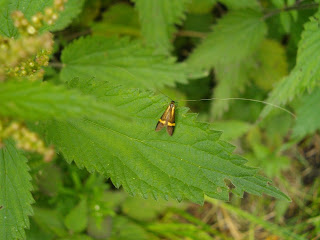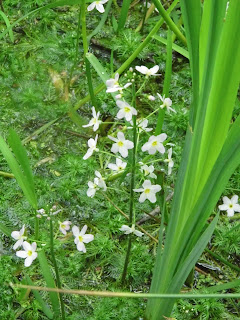15th June 2013
Sometimes you get the idea that a trip isn't going to go well. I arrived at Whitlingham to find my normal car park closed, so I headed on to the main one. Here the parking meter was broken, with a note saying "use the one in the overflow car park". As I got out I heard a peel of thunder overhead, and by the time I had returned to the car I had to take shelter from a heavy mid-summer hailstorm. After ten minutes or so it subsided and I got out. I hadn't gone far before my walking boots began sucking up all the nearby water by capillary action, completing their transformation from 'looking a bit rough' to 'no longer fit for purpose'.
Just another summer's day
And so it was, that I began my walk round with soggy feet and the feeling that today probably wasn't the day I got my 100th patch year bird. I began with a look around the ruins and Lime tree avenue for my best bet, Spotted Flycatchers. For the second year running I didn't see any, although I haven't completely given up hope yet. My second best bet was a flyover raptor (Marsh Harrier, Red Kite, Osprey all realistic shouts), so I kept scanning the skies in between the cloudbursts. On the broad itself there was nothing unexpected, most off the birds were Greylag as a result of a good breeding year and regular early summer gathering - I counted around 145 adults with several goslings - including two that appear to have been adopted by a pair of Canada Geese.
Just past the bird screen I got a cryptic message from Neil ("are you on your way to the Swift?"). A quick phone call back ascertained that he did indeed mean a Pacific Swift, but that it was in south Suffolk. A shame that it wasn't in Norfolk, but as I was going out in the afternoon it was probably for the best. Continuing around the broad the common warblers were all still singing, but only one or two of each. A couple of Common Terns were on one of the plastic platforms, and a brood of Coot were in the conservation area. There was still no sign of any cygnets - have all of the swan nests failed this year? With the lack of birds I searched through the undergrowth for anything interesting. Hundreds of Common Blue Damselflies flew about the nettles, with a few Blue-tailed Damselflies scattered in. The most interesting thing I found was a gall growing on Ground Ivy.













